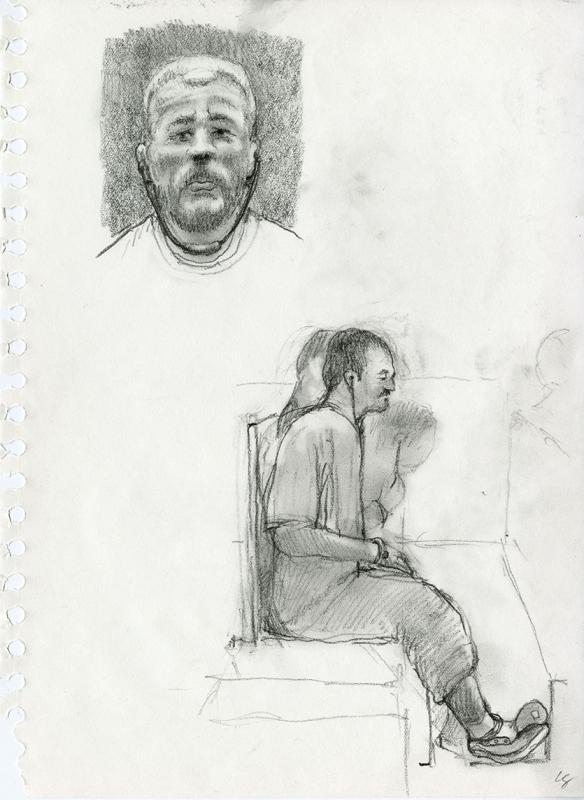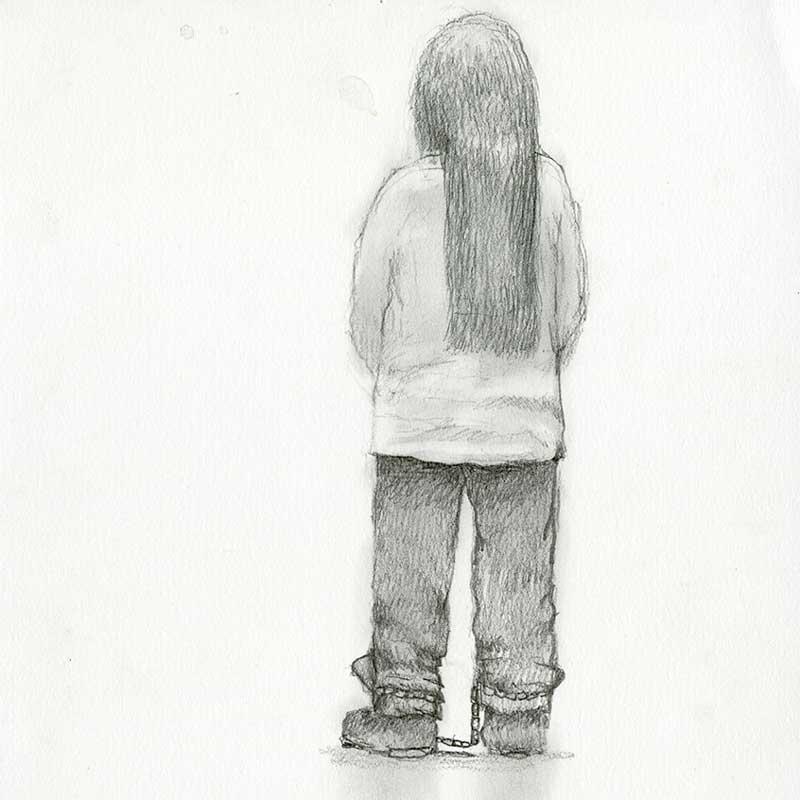Documenting "Operation Streamline"
Professor Lawrence Gipe’s illustrations of federal immigration court proceedings and deportee conditions provide a valuable resource for scholars and members of the public who want to better understand U.S. immigration policy. The ban on photography or videotaping proceedings in federal court make Gipe’s images some of the only visual representations of the controversial court proceedings known as “Operation Streamline,” which some critics call “assembly-line justice.”
In 2005, under President George W. Bush, the U.S. Department of Homeland Security implemented a new way of handling migrants who are picked up by the U.S. Border Patrol. They called the program Operation Streamline, which was meant to increase the “efficiency” of immigration courts. According to reports, between 2008, when the program began in Tucson, and 2013, as many as 70,000 migrants have been streamed through fast-track proceedings. Up to 100 migrants a day can be processed through the courts. The program has led to what some call a process of “crimmigration,” turning immigrants into criminals.
Restrictions on videotaping and photography make it difficult for the public to understand the implications of the program. Beyond illustrations of “Operation Streamline,” Gipe has created illustrations of conditions in detention facilities.
A note on taxonomy used to describe images in this collection:
In 2016, the American Library Association urged the Library of Congress to replace the subject heading “illegal aliens” with “undocumented immigrants.” The ALA’s resolution reflects a growing desire to remove dehumanizing, offensive, inflammatory, and racial slurs from our lexicon.
Special Collections continues to research taxonomy used in institutions, publications, and by our researchers and community members in order to include unbiased language in our subject’s field. This reflects our commitment to combine current Library of Congress taxonomy with changing language standards in modern academic research and political movements.
We recognize that alternative taxonomic suggestions can also be problematic and continue to research and follow changes in descriptive language at national and local levels.


